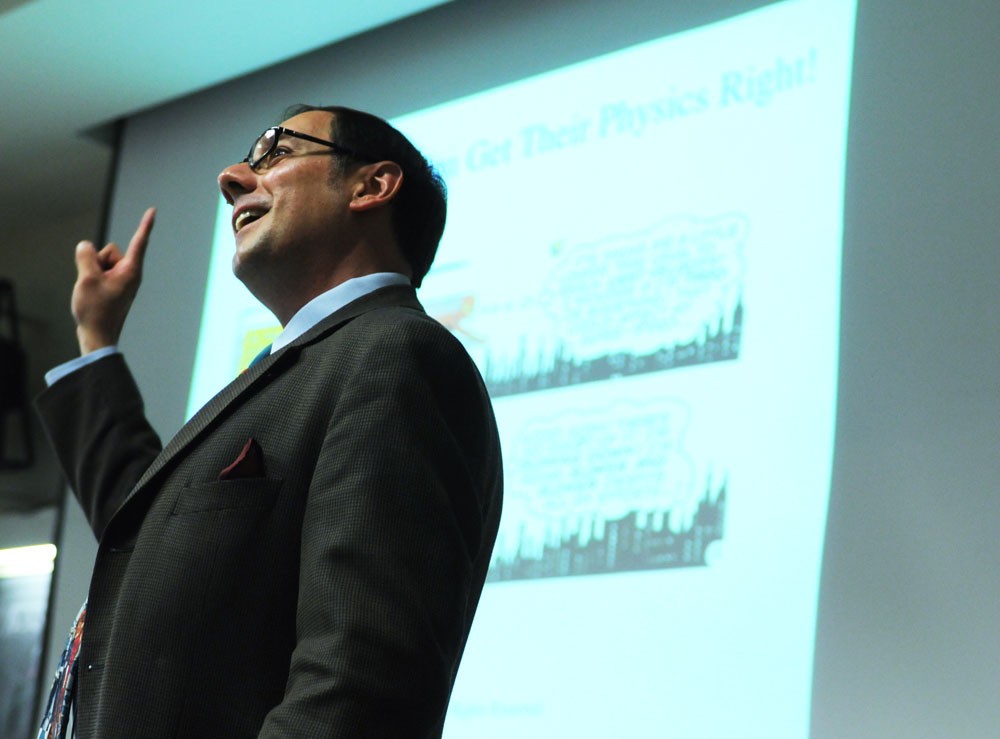Comic books and superheroes have been considered just a fantasy, but scientists are now making efforts to turn superpowers into reality. Professor James Kakalios, director of undergraduate studies in the physics department, spoke Wednesday about the connections between superheroes and materials science, while sporting a âÄúFantastic FourâÄù tie. âÄúYou can take anything from comics, TV shows, movies âÄî basically anything âÄî and apply them to materials science,âÄù Kakalios said. Kakalios discussed how scientists have created âÄúgecko tapeâÄù that uses millions of microscopic fibers, which creates an effect comparable to Spider-ManâÄôs wall-crawling abilities. Kakalios also said DC ComicsâÄô The FlashâÄôs ability to stop on a dime or MarvelâÄôs Mr. Fantastic âÄôs stretching ability can be applied in science. While Kakalios said he explores scientific aspects of comics, he doesnâÄôt take everything too seriously. âÄúThey couldnâÄôt put it in the movie if it wasnâÄôt true, right?âÄù Kakalios said. Comic book fans like Nathan Smith , an ancient history senior, have shown interest in such studies but can see a downside. âÄúItâÄôs really cool but, in some senses, itâÄôs kind of scary too, though,âÄù Smith, a former Marvel intern, said. âÄúAs much as I love reading about comic book heroes and superheroes, and it would be fantastic to live in a world like that,âÄù Smith said, âÄúthose places are kind of dangerous.âÄù Professor Allen Goldman, head of physics, introduced Kakalios to the audience. âÄúFor people really into physics, itâÄôs sort of a sideshow or entertainment,âÄù Goldman said. âÄúIt really gets people outside the department interested.âÄù Kakalios has done research on numerous subjects that go unnoticed by the public, but the link between comic books and popular culture has given him international recognition, he said. Kakalios wrote âÄúThe Physics of Superheroes, âÄú which explains the scientific aspects of superheroes. He began teaching a freshman seminar in 2001 called âÄúEverything I Know about Physics I Learned by Reading Comic Books.âÄù Applying materials science to comic books gives students a new perspective on physics, he said. âÄúStudents always think examples we use are artificial and divorced from reality,âÄù Kakalios said. âÄúSo now we are taking extremely artificial concepts so divorced from reality to show you can apply materials science to just about everything.âÄù Chemical engineering sophomore and comic book reader Balazs Hegedus said he is interested in the researchâÄôs potential. âÄúI think there are lots of more abstract ideas that can develop from things like that,âÄù Hegedus said. âÄúThings that seem to have no relation to reality but can actually inspire ideas and technology.âÄù











